Segovia, northwest of Madrid in the Castilla y Leon region of central Spain, is known for its 15th century royal castle, 16th century Gothic cathedral, and Roman aqueduct.

The Alcazar, or royal palace, sits high on a rocky spur. The form is sometimes compared to a ship.
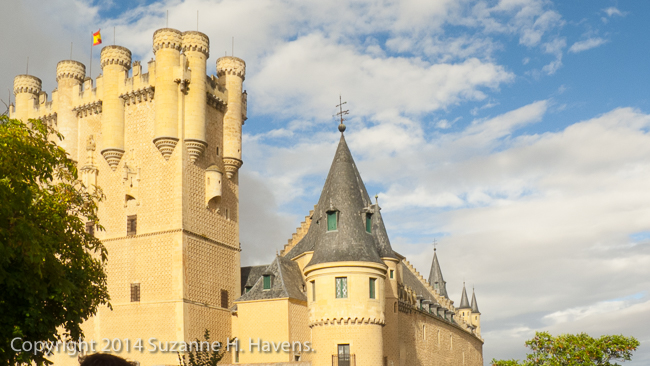
Castles were fortified because of the battles between the Catholics and the Moors.
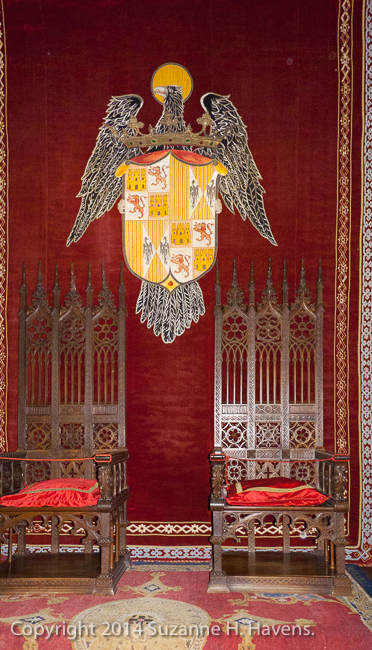
Royal thrones and crest
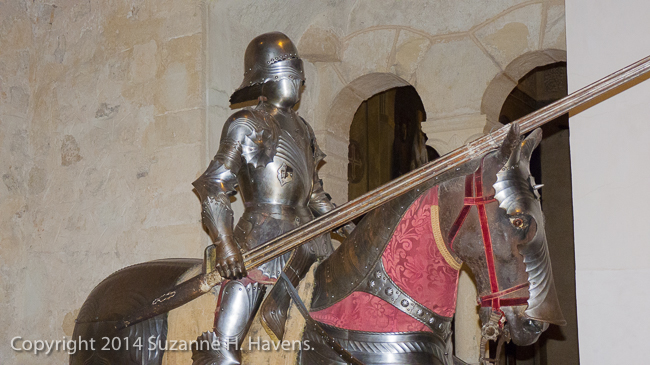
Both the knights and horses wore armor in battle.
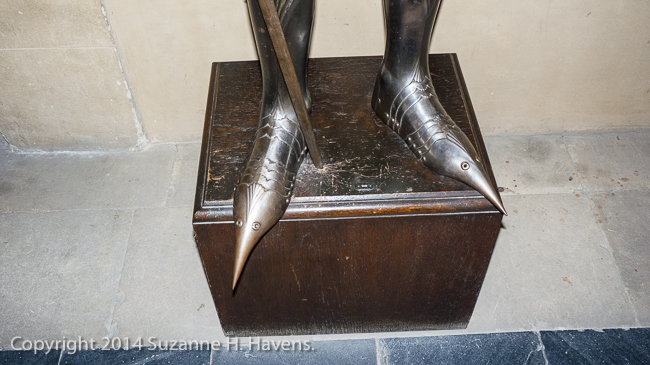
The knight’s amour covered his feet with a design that looks like a pair of ferocious birds.
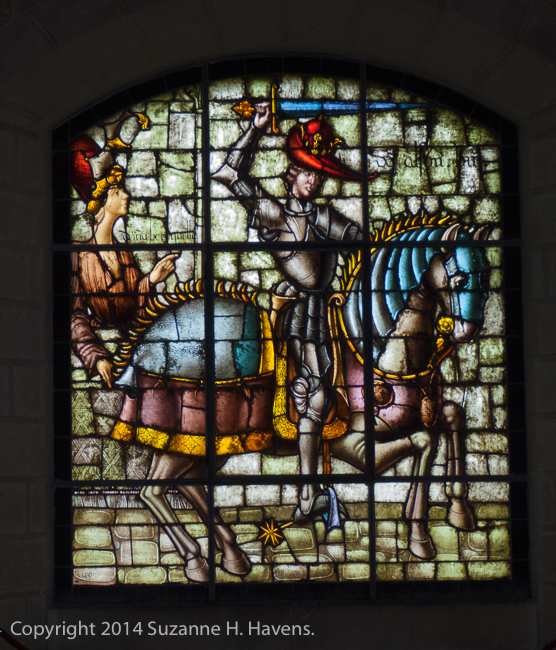
The knights’ bravery was heralded in stained glass windows.
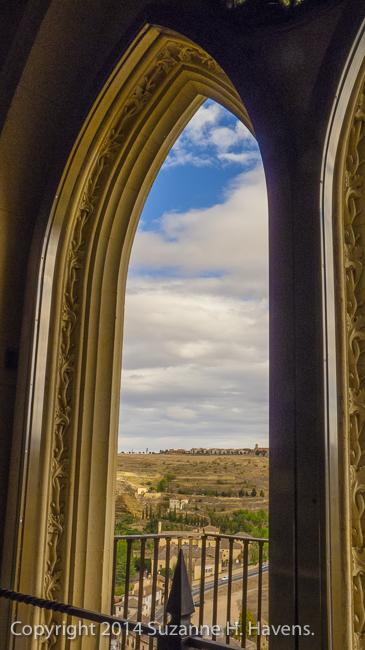
Autumn view of the fallow fields through a Gothic arch
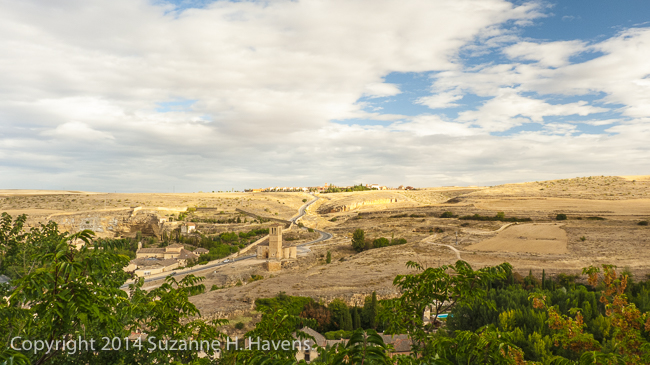
The golden fields among rugged hills provide a dramatic view from the Alcazar
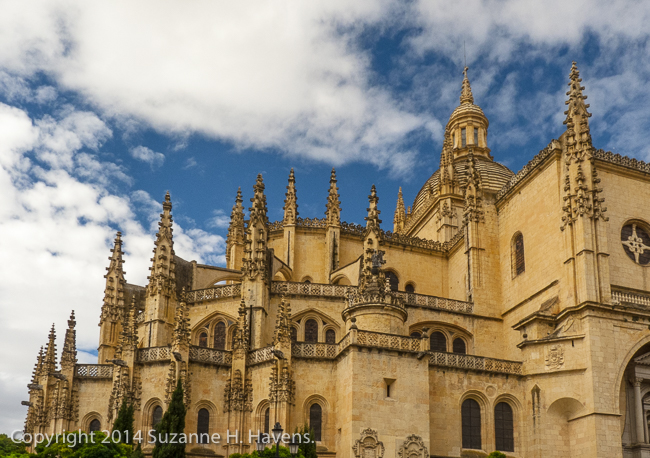
This cathedral was started in 1525 after the previous cathedral was destroyed during a revolt over the appointment of a regent from Utrecht.
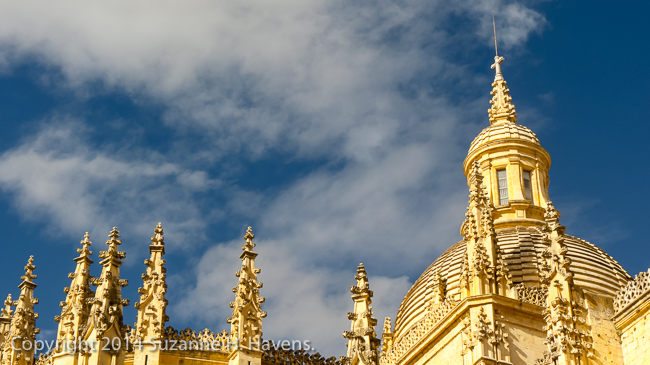
The cathedral was consecrated in 1678 and is called the last great Gothic church in Spain.
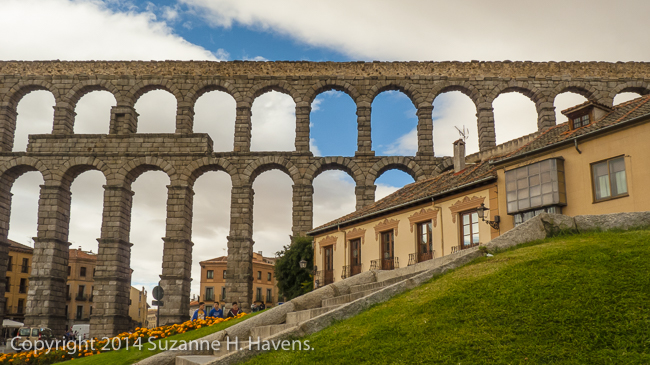
Water from the Rio Frio (Cold River) flowed into the city over its 2,400 foot length.
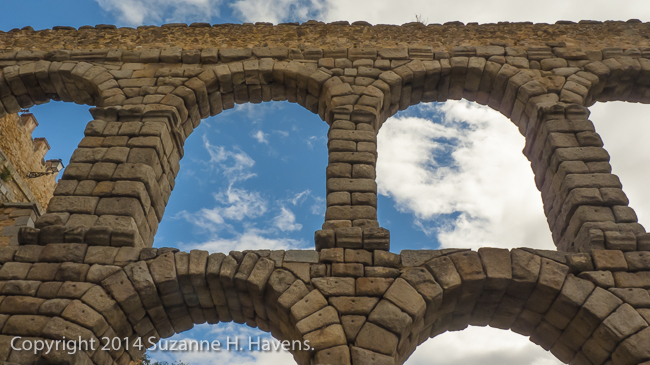
Two tiers of arches were required to cope with the change in gradient.
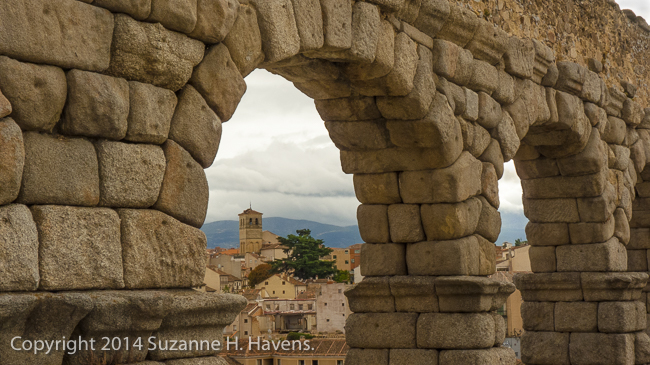
The aqueduct was built in the 1st century AD and was in use until the late 19th century.












